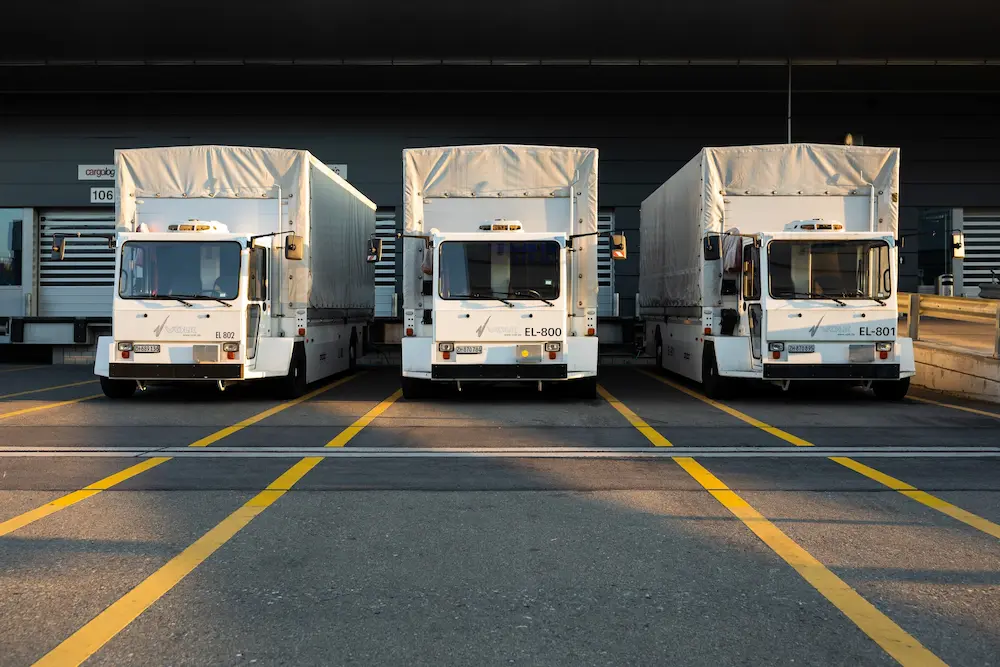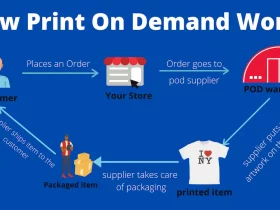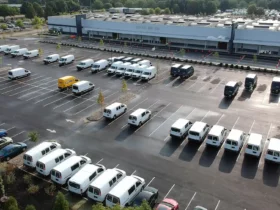Corporate fleet management is a crucial aspect of running a successful business. Whether you’re in logistics, delivery services, or any industry that relies on a fleet of vehicles, efficiently managing your fleet can significantly impact your bottom line. One key challenge that fleet managers often face is the need for vehicle relocation. Whether it’s redistributing vehicles to meet customer demands or optimizing routes to minimize costs, successful vehicle relocation can streamline operations and maximize productivity.
1. Partner with a Car Transport Company
Partnering with a car transport company can be a valuable strategy to enhance your vehicle relocation efforts in corporate fleet management. Car transport companies specialize in efficiently moving vehicles from one location to another, utilizing their expertise and resources in transportation logistics. By establishing a partnership with Road Runner auto transport services, you can leverage their industry knowledge, experience, and network of carriers to handle the relocation of your fleet vehicles. These companies have the necessary equipment, such as car carriers or enclosed trailers, to transport vehicles safely and securely.
They also have access to professional drivers who are skilled in handling different types of vehicles. Additionally, car transport companies often provide insurance coverage for the vehicles being transported, ensuring that your assets are protected throughout the relocation process.
2. Implement Data-Driven Route Planning
Efficient route planning is crucial when relocating vehicles within your fleet. By leveraging data from GPS tracking systems, historical traffic patterns, and real-time road conditions, you can optimize routes to reduce mileage, save time, and lower fuel costs. Route planning software and algorithms can help you create optimal plans for multiple vehicles, taking into account factors like delivery schedules, traffic congestion, and driver availability. By adopting a data-driven approach to route planning, you can minimize unnecessary detours, avoid congested areas, and improve overall fleet efficiency.
Advanced GPS Tracking Systems
By equipping your vehicles with advanced GPS tracking systems, you can monitor their movements, identify idle or underutilized vehicles, and make informed decisions about relocation. These systems provide detailed information about routes, traffic conditions, and fuel consumption, allowing you to optimize vehicle deployment and minimize downtime. Additionally, with geofencing capabilities, you can set virtual boundaries and receive alerts when vehicles enter or leave specific areas, ensuring compliance and enhancing security.
3. Embrace Telematics Technology
Telematics technology combines telecommunications and informatics to gather and analyze vehicle data. By integrating telematics systems into your fleet management strategy, you can gain insights into various performance metrics, such as fuel consumption, engine health, and driver behavior. These insights allow you to identify inefficient vehicles or drivers, address maintenance issues proactively, and optimize vehicle utilization. Telematics technology also provides real-time feedback to drivers, promoting safer driving habits and reducing the risk of accidents, which can lead to costly delays and repairs.
4. Adopt Smart Vehicle Relocation Software
To streamline the process of vehicle relocation, consider implementing smart vehicle relocation software. These software solutions provide a centralized platform to manage and track the movement of vehicles within your fleet. They offer features such as automated dispatching, route optimization, and real-time communication with drivers. By leveraging this technology, you can quickly identify the nearest available vehicle for a new assignment, allocate resources efficiently, and minimize idle time. Furthermore, these software solutions often integrate with other fleet management tools, such as GPS tracking systems and telematics, providing a comprehensive solution for your vehicle relocation needs.
- Automated dispatching: Smart vehicle relocation software automates the process of assigning vehicles to new assignments, eliminating the need for manual coordination and reducing human errors.
- Route optimization: The software utilizes advanced algorithms to optimize routes based on factors like traffic conditions, distance, and delivery schedules. This helps minimize mileage, fuel consumption, and overall travel time.
- Real-time communication with drivers: The software enables seamless communication between fleet managers and drivers, allowing for instant updates, instructions, and notifications. This ensures smooth coordination and enables quick adjustments if needed.
- Resource allocation: By having a centralized platform that tracks the location and availability of each vehicle, the software enables efficient resource allocation. Fleet managers can easily identify the nearest available vehicle for a specific assignment, reducing idle time and maximizing productivity.
5. Implement Driver Incentive Programs
Driver cooperation and engagement are key factors in successful vehicle relocation. By implementing driver incentive programs, you can motivate and reward your drivers for their contribution to efficient fleet operations. Offer incentives such as bonuses or recognition for achieving specific relocation targets, maintaining fuel efficiency, or adhering to optimized routes. By aligning driver incentives with your fleet management goals, you can foster a sense of ownership and encourage drivers to actively participate in the vehicle relocation process. This not only improves overall fleet performance but also boosts driver satisfaction and retention.
6. Consider Intermodal Transportation Options
When it comes to vehicle relocation, exploring intermodal transportation options can be a game-changer. Instead of relying solely on driving vehicles from one location to another, consider utilizing other modes of transportation such as rail or sea transport for long-distance relocations. Intermodal transportation can be a cost-effective solution, especially for moving multiple vehicles over considerable distances. By strategically combining different modes of transportation, you can minimize wear and tear on vehicles, reduce fuel consumption, and optimize resource allocation. It’s important to conduct a thorough cost-benefit analysis and consider factors like transit times, loading/unloading requirements, and the availability of intermodal infrastructure in your area.
7. Leverage Peer-to-Peer Car-Sharing Platforms
In today’s sharing economy, peer-to-peer car-sharing platforms offer a unique opportunity for efficient vehicle relocation. These platforms connect vehicle owners with individuals or businesses in need of temporary transportation. Instead of leaving vehicles idle or spending resources on moving them manually, you can list your underutilized fleet vehicles on these platforms. By doing so, you can generate revenue while relocating vehicles to areas with higher demand. Additionally, peer-to-peer car-sharing platforms often have robust insurance and security measures in place, providing peace of mind when it comes to the safety and well-being of your fleet assets.

Successful vehicle relocation is a critical aspect of corporate fleet management. By implementing the seven insider techniques and hacks discussed in this blog post, you can streamline operations, reduce costs, and enhance the overall efficiency of your fleet. Leveraging advanced GPS tracking systems, data-driven route planning, telematics technology, and smart vehicle relocation software empowers you with the necessary tools to make informed decisions and optimize resource allocation.













